Clavichords, Harpsichords, and Variations Require Special Touches
This article was first published in EMAg in the January 2021 issue, Vol. 27 No. 1.
They are brilliant and historically knowledgeable. They are dedicated and persistent. They don’t often get the spotlight they deserve but, without them, we players would not be able to make beautiful music—whether it is in concert venues, studios, practice rooms, or at home.
They are the makers, the repairers, and the restorers of harpsichords and clavichords, and there are more in North America than one might suspect. Audience members sometimes are surprised, and often delighted, to learn that there are contemporary craftsmen working with historic keyboards. A number of these expert problem solvers, learners, and thinkers in the U.S. and Canada were happy to share their philosophies on instrument making and repair, as well as working with clients.
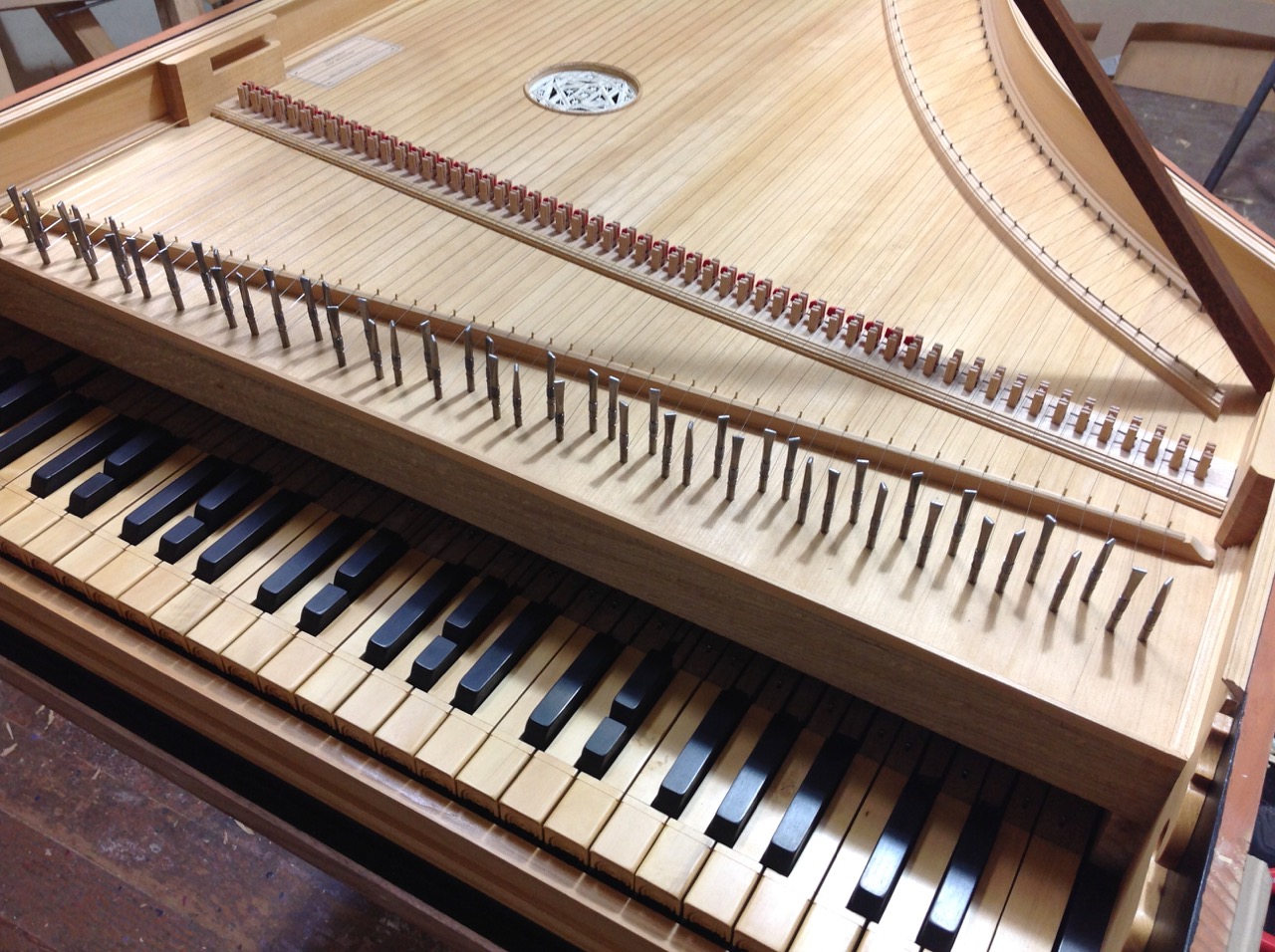
Owen Daly, based in Salem, OR, has been making harpsichords and clavichords since the late 1970s. A player himself who can be heard in recitals and ensembles, he took lessons with Lynn Hansen, John Hamilton, and Joan Benson at the University of Oregon, where he was a graduate student in medieval literature. Having started with no woodworking experience, he notes the importance of enlisting help from as many experienced and smart people as he could.
“I learned what I now feel were the most important lessons, about standards and taste, from my music teachers,” he said, “and pestered such people as the distinguished organ maker John Brombaugh, who lived in Eugene nearby, and benefited hugely from the often acerbic but always useful observations of my long-time Seattle-based friend and mentor David Calhoun, former West Coast agent for Zuckermann Harpsichords International.”
To date, Daly has made 75 harpsichords and clavichords of diverse styles and periods. His clavichords mostly are fretted, “quite a few after Portuguese exemplars.” He has also made Italian-inspired harpsichords—several with split-accidentals— along with “a few mainstream French doubles,” “earlier-style” French harpsichords, and harpsichords following the principles of what he calls the “‘Prussian school,’ whose most prominent exemplars are [Michael] Mietke and [Christian] Zell.”
When an instrument leaves his shop for its new home, Daly faces “mental and emotional challenges—the feeling of being on tenterhooks, as we often call it.” He notes anxieties ranging from “waiting for the fateful email or telephone call” to a series of unknowns: “Will the instrument live up to their expectations? Will they be adaptable to what is new to them? Will it be out of sorts from the travel and perhaps manifest quirks that never arose before it left home? All this at a time when we have relinquished all control.”
*
Doug Maple, a harpsichord and clavichord maker in Lemont, PA, initially built instruments for his own use when he was finishing college as a biochemistry major in 1975. His interest in early keyboards and their literature continued to grow, leading him to graduate school at the University of Chicago, where he earned a Ph.D. in musicology in 1988.
During his academic years in the 1980s, Maple continued to build instruments and worked extensively as a technician, servicing instruments in the Chicago area. This period also saw “a key turning point” in his development as a maker. A summer internship and subsequent research fellowship in the musical instrument collection of the Metropolitan Museum of Art in New York allowed him to study the museum’s surviving 16th-century Flemish virginals and numerous harpsichords and clavichords. “In many ways, the old instruments themselves have served as my teachers,” he said. Maple also acknowledges the many helpful discussions he has had with gifted makers and technicians over the years, including Hardy Schlick, Stewart Pollens, Willard Martin, Paul Irvin, Anden Houben, and Owen Daly.
Maple is keen to share his philosophy on working with clients of different backgrounds. “Professional players—and some advanced amateurs—will already be knowledgeable about the best-known antique models and their characteristics, and they may also want to offer some input about how the instrument should be set up and voiced,” he said. “I feel that it is then up to the maker to try to honor those preferences, assuming that the requests are reasonable and don’t conflict with the maker’s own experience and understanding of the specific model.”
As for working with amateur players, Maple said, “A conscientious maker does have to exercise some care, however, that each customer is selecting a model that is appropriate for his or her interests and skill level. I am happy to assist the customers in the decision of what models are most suitable for them, and I am willing to tailor the voicing of a harpsichord or the stringing schedule of a clavichord so that it is appropriate for their level of playing—as long as the end product stays within the range of historical practices.”
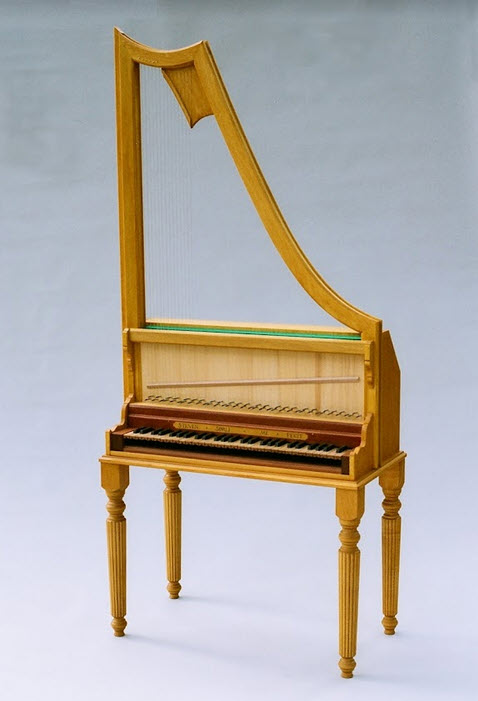
Harpsichord is a generic term referring to the various designs of plucked string keyboards. Steven Sørli of Amherst, MA, has been making harpsichords since the early 1970s. He is probably best known for his lautenwerke—or lute-harpsichords, and for his innovative instrument designs. Early in his career, he viewed “making copies to be somewhat unfulfilling,” noting that “the most important element in creating something is the genesis of the design.” He noted that “a relatively small percentage of the instruments made in centuries past have survived. However, what is obvious is that there was an abundance of creativity. My philosophy is to fill in the gaps of this creativity and provide players with more diverse options to work with.”
Since 1999, Sørli has been creating different designs for the lautenwerk, a gut-strung harpsichord from the 18th century with no surviving examples. He initially experimented and compared the string scaling between gut and the synthetic alternatives and eventually “settled on fluorocarbon strings.” Over the years, he has come up with many designs, including lautenwerke “with sliding keyboards to vary the plucking points, double manuals with 16-foot strings for a theorbo effect,” and an upright “clavicytherium inspired by the one depicted in the 1640 painting by Andrea Sacchi of Apollo crowning the singer Pasqualini.”
Sørli’s most recent model, which he calls a “keyed lyre,” adapts his “lute-strung clavicytherium concept as a horizontal instrument with two choirs of strings.” Inspired by the 1657 Henning Hake clavicytherium at the Stockholm Scenkonstmuseet (Swedish Museum of Performing Arts), the keyed lyre has two soundboards without a deep case or bottom. “The sound of the eight-foot is vibrant, transparent, and penetrating,” Sørli said. “What makes it truly unique is the second choir, which is an octave mixture stop as you would find on an organ. The bottom half of the keyboard plays four-foot strings and the top half 16-foot strings, all quietly voiced.”
It’s always fun to check out Sørli’s new designs at the Boston Early Music Festival Exhibition.
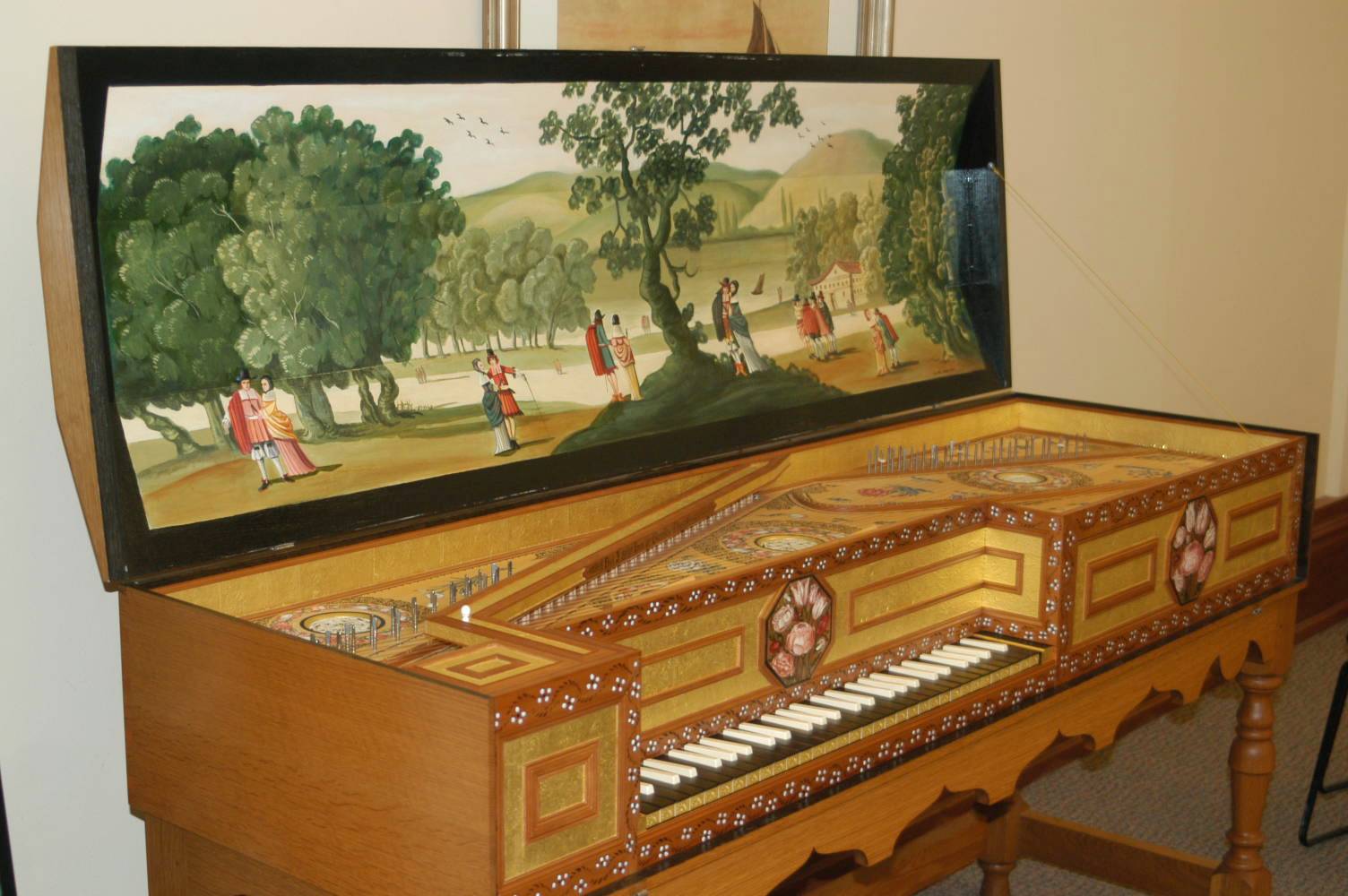
Now a resident of Portland, OR, Paul Irvin has more than 40 years of experience servicing early keyboards in the Chicago area and has built nearly 70 instruments. They range “from small spinets and virginals to large, double-manual harpsichords, and from carry under-the-arm clavichords to large five-octave unfretted ones” of various national styles.
Makers often have different takes on copying original instruments. “The earlier my work, the more likely it was ‘inspired’ and/or adapted from historical models,” Irvin said. “This was due to my young naiveté/hubris, as well as the desire of customers to have a wider compass and/or other features that the original designs lacked. As my output progressed, the more closely I tended to copy the original models as I gained increasing evidence that the historical builders really fundamentally knew what they were doing better than any modern makers did.”
Irvin has contributed articles to various publications in North America and Europe. Most of his subjects “so far deal mainly with harpsichords, but with some overlap for clavichords and fortepianos when discussing the changes to speech, timbre, and sustain when using different string materials, string schedules, pitches, sizes and materials of bridge and nut pins, etc.”
His recent research explores new aspects other than “just shaping the plectrum” in harpsichord voicing. “The historical makers appear to have developed at least three different systems of register and jack features that allowed the string to be displaced and released, similar to the way the finger of a lutenist, harpist, or guitarist controls those actions on their instruments,” Irvin said. “This results in a fuller, less bright, less snappy, and longer-lasting tone, as heard in those fingered instruments, as well as from other instruments of those periods.” He said he has at least one article on this topic in the works.
*
Often, it is the client who decides what the maker makes. Yves Beaupré of Montreal was privileged to have had one client who offered to celebrate the creation of Beaupré’s 100th instrument by commissioning him to make a clavicytherium after Albert Delin (1712–1771). It can be heard on a CD of music by Jean-Henri d’Anglebert performed by Hank Knox. “It is so special to play on a clavicytherium, with the soundboard right in front of you,” Beaupré said. “The mechanism is very sophisticated, and there is no chance for mistakes. Everything needs to be very precise in order to work perfectly. It’s the kind of challenge I love.”
Beaupré also enjoys taking on new challenges outside of his commissions. An example of his self-driven work is his first pedal harpsichord, which is featured on an all-Bach CD performed by Luc Beauséjour. Like the lautenwerk, the pedal harpsichord is described only in sources, with no surviving originals. Beaupré had to make his own drawings and eventually came up with a pedal-board design with two choirs of strings, one at eight-foot (normal) pitch and the other at 16-foot (sounding an octave lower than normal pitch). To date, he has made three pedal harpsichords.
Beaupré’s portfolio contains harpsichords after the French, Flemish, Italian, and German schools, a number of clavichords—mostly small and fretted—and a fortepiano. His philosophy about making historic instruments is “to unveil the traces of lives and cultures in the past.” He said that “it is important to replicate original instruments with respect to their origins. Following past principles is a good way to succeed.”
Although many early keyboard makers work alone, Beaupré was joined two years ago by an associate, his son Benoît. The father-and-son team has built a clavichord after Christian Gottfried Friederici, and their latest instrument is a fortepiano after Gottfried Silbermann, Opus 168. Speaking of his son with great pride, Beaupré said Benoît has brought “fresh ideas and perspectives” and prompted him “to rethink some approaches that he had followed for a long time.”
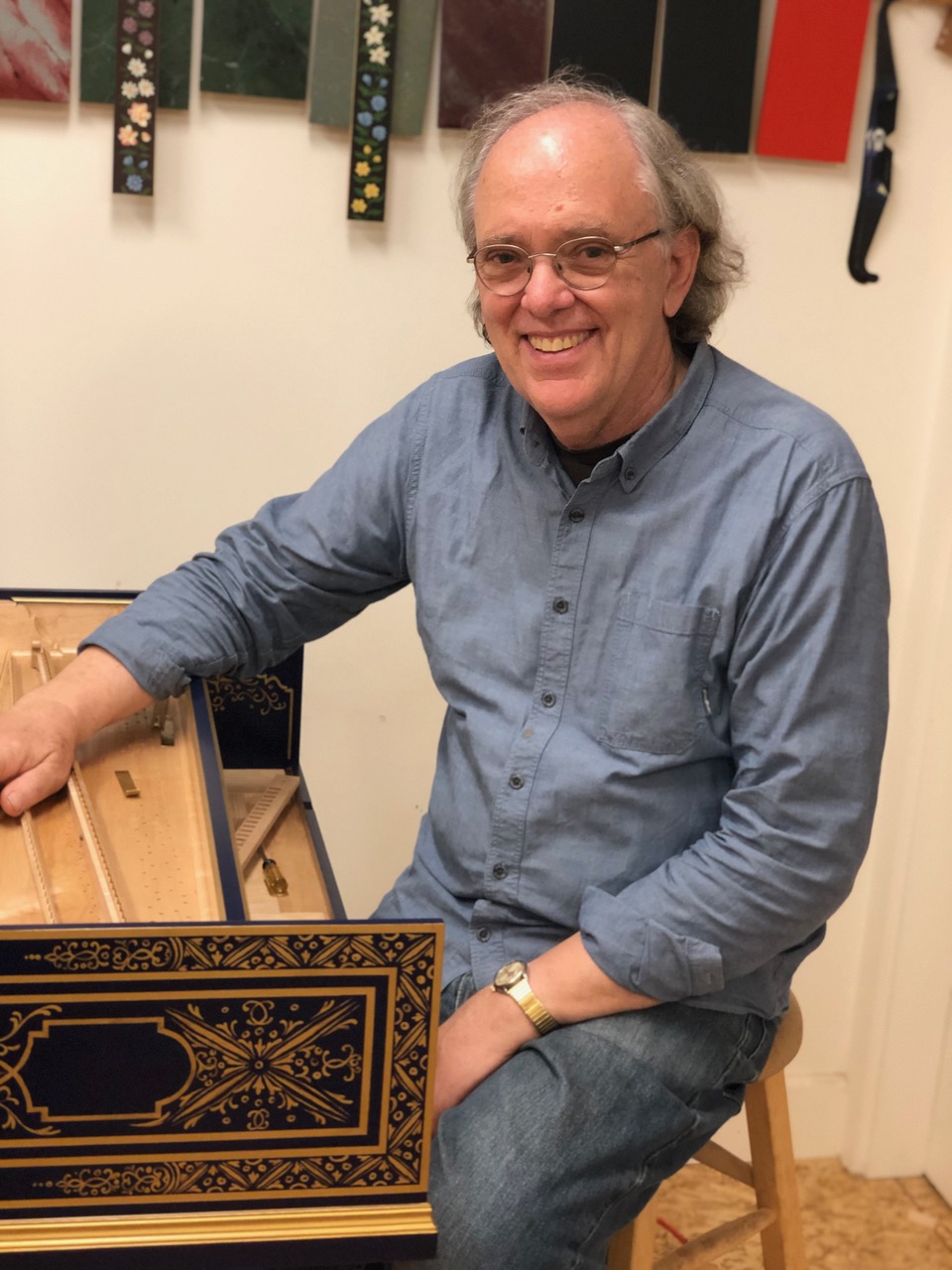
The shop of harpsichord maker John Phillips of Berkeley, CA, is another example of teamwork. He currently is assisted by two employees, one of whom, Janine Johnson, has worked in the shop as a finisher, decorator, and keyboard maker for 35 years.
“While it is certainly possible to make harpsichords alone, the craft requires a wide variety of skill sets, ranging from cabinet making to decorative painting to fussy musical finishing, all of which need to be done well,” Phillips said. “Although I have done all of them over the years, I quickly learned that it worked better for me to hire assistants who could perform some of these tasks as well as or better than I could. This also enabled me to produce more instruments and to offer extras such as decoration and fancy stands, which could be done in-house. It required creating a suitable environment where we could make harpsichords.”
Phillips pays close attention to his clients’ preferences on harpsichord styles. “Over the years, our musical tastes have evolved,” he said. For a long time, his shop made harpsichords in French, Flemish, and Italian styles, “though the majority were various French doubles.” He added that “in the new century, over half of our instruments have been various sorts of Gräbners,” referring to harpsichords modeled after those made by Johann Heinrich Gräbner, who worked in Dresden in the 18th century. “We are still asked to make our other styles of instruments, but our most popular model of the 20th century, the 1646 Andreas Ruckers/1780 Pascal Taskin, was last made 15 years ago.”
Phillips is among those who prefer quill plectra. “Of our last 30 instruments, only three have been voiced in plastic, and many of our older instruments have been revoiced in quill,” he said. “The whole advantage to natural quill over plastic is that it is stiffer, producing a cleaner attack and a more nuanced range of articulation, all with less effort. These are essential elements to making the unyielding harpsichord an expressive musical instrument.”
Richard Kingston of Fort Mill, SC, has made an impressive number of harpsichords—334. He completed his latest recently for Princeton University. Among his most memorable projects is his Opus 333, a large double with a modern case painting by Lisa Creed that has been heard at many harpsichord events and projects performed or organized by Elaine Funaro. He has worked with a list of celebrated harpsichord decorators, including Pamela Gladding (a collaborator of 30 years), Sheridan Germann, and Tatyana Nivina.
Kingston bases his approach to instrument making on “knowing the materials, careful precise workmanship, keen ears, and fingers. All great makers develop their own sense of tone and touch. It guides them from the selection of each piece of wood to the final note’s voicing.” He said the way materials are used “can be more important than what material is selected in attaining the goal. Giving a harpsichord its speech is the final step. When I sit down to voice, I focus on nothing else but finding the sweet spot for that instrument.”
In recent years, Kingston has focused on refurbishing his older instruments. “After 30 or 40 years of good service, it’s time to put them back to new condition for the next 40 years,” he said. “Occasionally, I take in a dud and turn it into a swan. It keeps me on my toes. It is a challenge to my skills, and it’s fun to do.”
He is working on an article documenting the transformation and improvements made in the past 60 years to a harpsichord built in 1959 by the legendary maker William Dowd. He summarized the changes made to Dowd’s Opus 3. “Pedals were removed at some point, probably in the late ’60s or early ’70s. In the ’80s, it received new jacks and new slides. In the ’90s, Willard Martin made it transpose and added a new note at the top. Tomorrow’s antiques are with us now.”
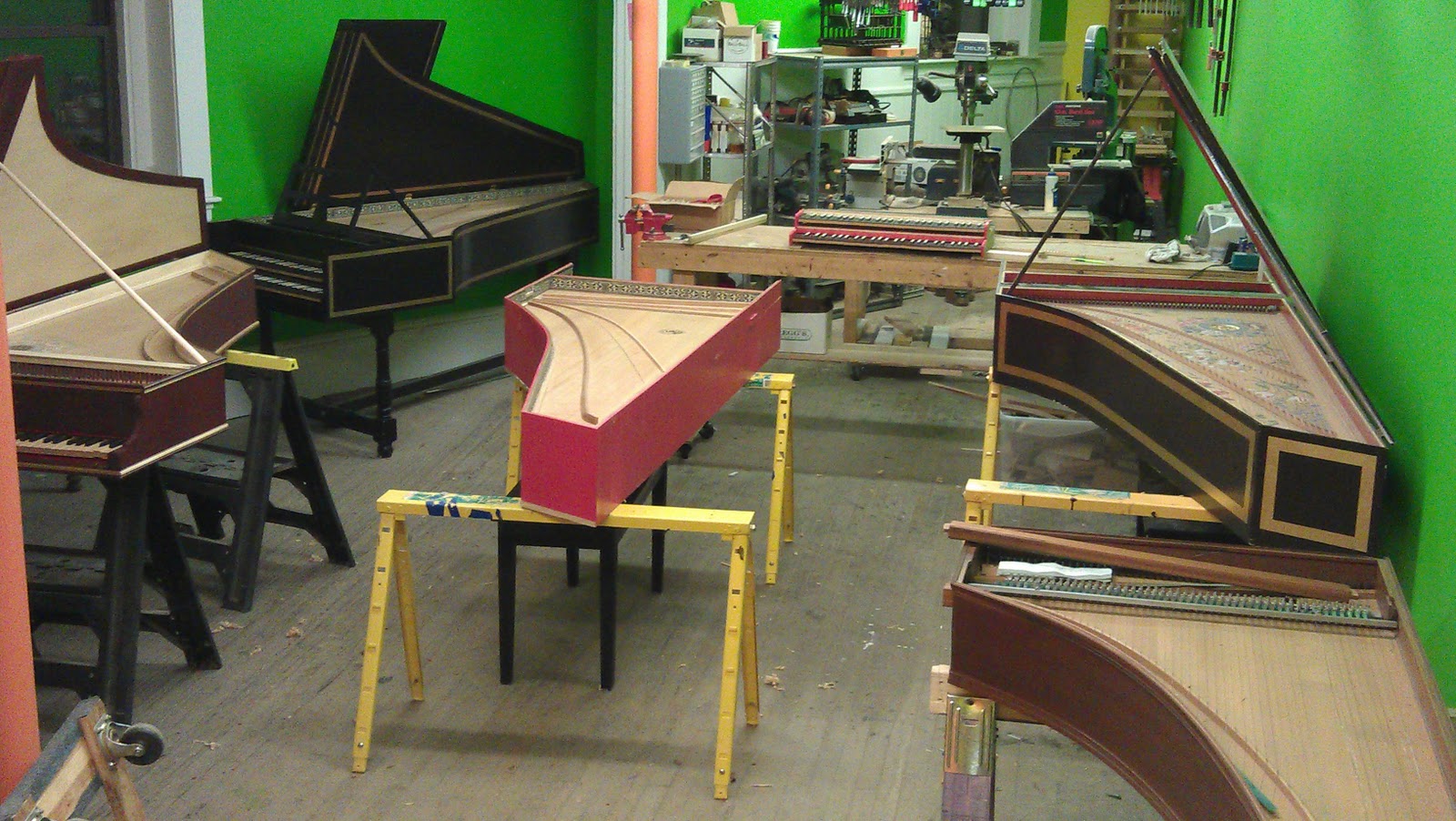
Instruments need maintenance, repair, or even restoration at one point or another to play their best. Dale Munschy, who relocated his shop in 2018 from Somerville to South Weymouth, MA, has “done countless restorations of harpsichords, virginals, clavichords, and fortepianos by builders including Dowd, Herz, Sutherland, Challis, Dolmetsch, Russell, Pleyel, and Belt.” With a background as a modern-piano technician, he began working on historical keyboard instruments in the late 1980s and looked for opportunities to buy, repair, and sell harpsichords.
Before he opened his own shop in 2011, he had worked as a technician at the Harpsichord Clearing House in Rehoboth, MA, where he “gained enormous experience in historical keyboard restoration” and “had the good fortune to work with master craftsman John Bennett, who was and remains a good friend and mentor.”
Like many other technicians, Munschy works not only in his shop, but also at clients’ locations and has “made several trips across the country for deliveries and on-site restoration work.” He believes “every instrument, regardless of its quality, needs to function as well as its design and construction allow. An instrument made from a kit by an amateur deserves—and receives—the same level of care and attention as a professionally made instrument.”
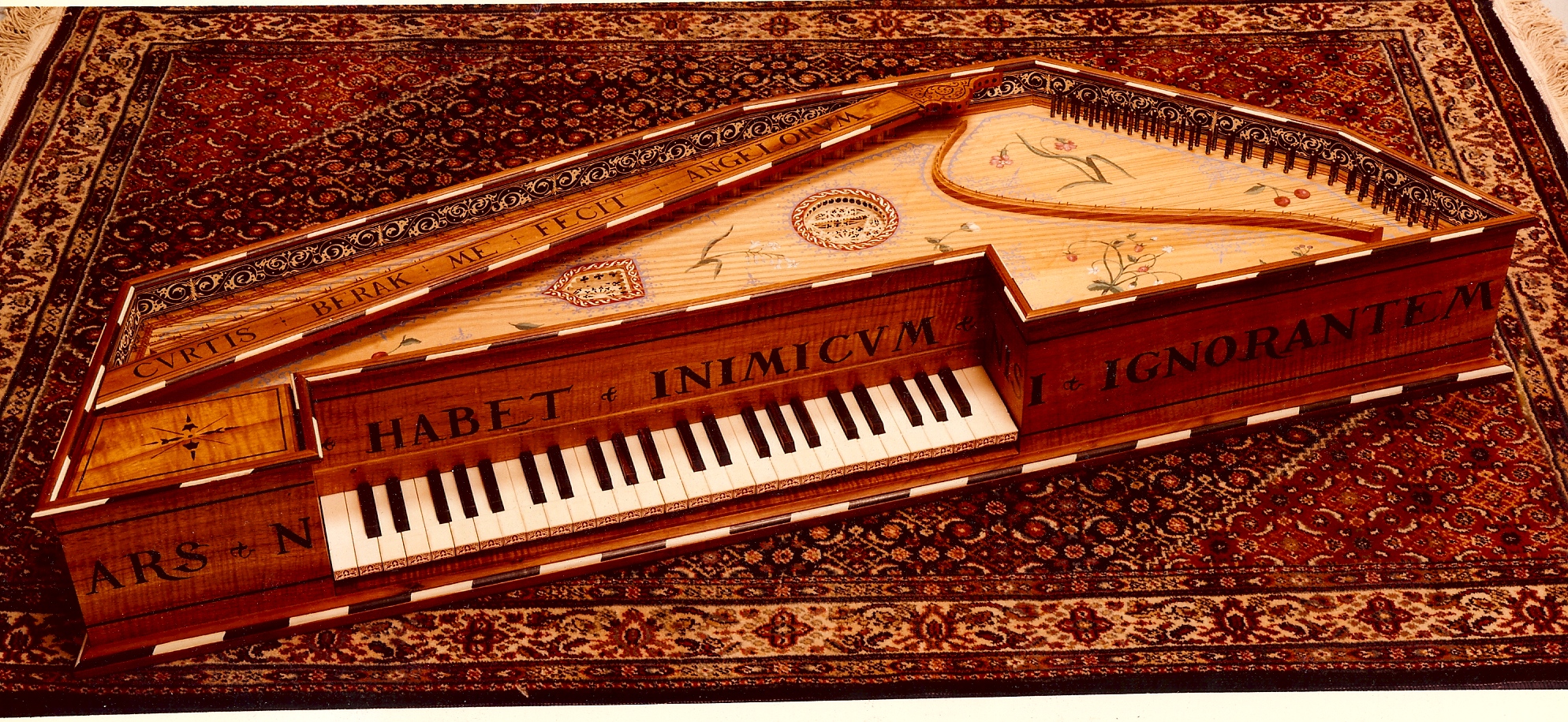
Curtis Berak, harpsichord maker and early keyboard restorer, has been based in downtown Los Angeles since 1976. Pretty much the go-to person for anything about early keyboards in Southern California and beyond, he has repaired and restored instruments for a long list of owners and institutions.
A painter himself, he makes, restores, and decorates instruments both for his own enjoyment and for rental by numerous organizations in the region, including the Los Angeles Philharmonic, Walt Disney Concert Hall, Los Angeles Chamber Orchestra, Musica Angelica, and San Diego Early Music Society. His instruments have been used by such renowned artists as Richard Egarr, Emmanuelle Haïm, Ton Koopman, Nicholas McGegan, Blandine Rannou, Christophe Rousset, Andreas Staier, Melvin Tan, Jory Vinkour, and Glen Wilson.
Berak said it can be “nerve-wracking” to prepare instruments for distinguished musicians since “the harpsichord is not uniformly the same for everybody.” He said he always tries to do what they want “if I’m able to do it. I don’t impose my judgments, and I am always open to learn.”
Preparation time for events can be tight. “I’ve become really good at figuring out what’s wrong with a harpsichord,” said Berak, “and I can go through pretty quickly and get things in order and not waste time on fixing the wrong things.”
Sonia Lee is editor of the Early Music Journal and the Historical Keyboard Society of North America (HKSNA) Newsletter. As a performer, she has appeared as soloist and collaborative artist on historical keyboards throughout North and Latin America, Europe, and Asia. She is a past president of HKSNA and resides in Pasadena, CA.

